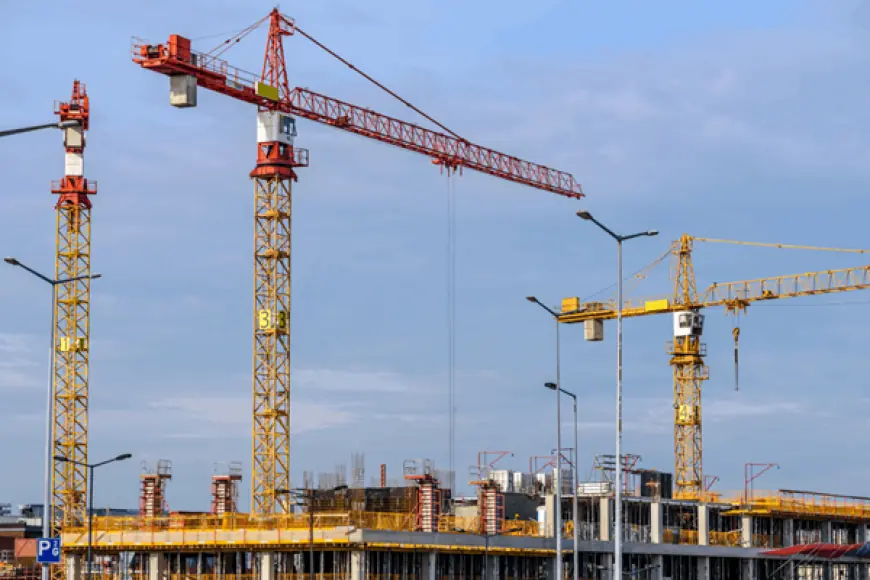EOT Cranes: Types, Uses, and Benefits in Modern Industries
Discover EOT cranes, their types, uses, and benefits in industries. Learn how they improve efficiency, safety, and material handling operations.

Introduction
In today’s fast-paced industrial world, material handling plays a crucial role in ensuring efficiency, safety, and cost-effectiveness. One of the most widely used solutions for lifting and transporting heavy loads is the EOT Crane (Electric Overhead Traveling Crane). These cranes are commonly found in factories, warehouses, workshops, and construction sites where heavy-duty lifting is a regular need. With their ability to move loads precisely and effortlessly, EOT cranes have become an indispensable part of modern industrial operations.
What is an EOT Crane?
An EOT Crane is a type of overhead crane that runs on an elevated runway system, usually parallel to the length of a factory or warehouse. It is powered electrically and controlled either manually through a pendant, wireless remote, or cabin controls. The main purpose of an EOT crane is to lift, lower, and move heavy loads across different areas of the shop floor.
The crane consists of three main components:
- Bridge – The horizontal structure that spans across the working area.
- Crab/Trolley – The unit that moves along the bridge, carrying the hoist and load.
- Hoist – The mechanism that actually lifts and lowers the material.
Types of EOT Cranes
EOT cranes are categorized based on their design and application. The most common types include:
1. Single Girder EOT Crane
- Designed with a single main girder (beam).
- Economical, lightweight, and ideal for light to medium-duty operations.
- Typically used in small workshops, warehouses, and assembly units.
- Load capacity usually ranges up to 20 tons.
2. Double Girder EOT Crane
- Built with two main girders, providing extra strength and stability.
- Suitable for heavy-duty lifting and high-speed operations.
- Can handle large loads up to 500 tons or more.
- Commonly used in steel plants, large factories, shipyards, and heavy machinery manufacturing.
3. Underslung (Underhung) EOT Crane
- Runs on tracks attached to the ceiling instead of the floor.
- Saves floor space, making it suitable for small factories or workshops.
- Best for areas with limited space but lower load capacity.
Key Features of EOT Cranes
- High Load Capacity: Can handle loads ranging from a few tons to several hundred tons.
- Efficient Movement: Smooth travel in both horizontal and vertical directions.
- Automation: Can be integrated with automation and advanced safety features.
- Durability: Built with strong materials for long-term industrial use.
- Customization: Designed to suit specific industries, load types, and working environments.
Applications of EOT Cranes
EOT cranes are versatile and widely used across various industries:
- Manufacturing Units – For lifting raw materials, machinery parts, and finished goods.
- Warehouses & Logistics – For efficient material handling and storage management.
- Steel Plants – For moving molten metal, heavy steel coils, and fabricated components.
- Shipyards – For lifting ship parts, containers, and heavy tools.
- Construction Sites – For handling concrete blocks, beams, and equipment.
- Power Plants – For turbine installation, maintenance, and repair works.
Advantages of EOT Cranes
- Enhanced Safety: Reduces manual labor risks by handling loads safely.
- Cost-Effective: Minimizes manpower requirements and increases productivity.
- Time-Saving: Quick and precise handling of heavy materials.
- Flexibility: Can be adapted for indoor and outdoor industrial use.
- Space Utilization: Optimizes floor space by operating overhead.
Safety Precautions for EOT Crane Operations
While EOT cranes are highly efficient, safety must always be a priority. Some important precautions include:
- Regular inspection and maintenance of the crane and hoist.
- Training operators in safe crane handling practices.
- Avoiding overloading beyond the rated capacity.
- Using safety devices like limit switches, overload protection, and emergency brakes.
- Keeping the operating area free from obstructions.
Conclusion
EOT Cranes have revolutionized the way industries handle heavy materials by making lifting operations faster, safer, and more efficient. Whether it is a small workshop needing a single girder crane or a steel plant requiring a heavy-duty double girder crane, these machines provide unmatched reliability and performance. With proper maintenance and safe operation, EOT cranes can serve as a long-term investment that significantly enhances industrial productivity.
What's Your Reaction?
 Like
0
Like
0
 Dislike
0
Dislike
0
 Love
0
Love
0
 Funny
0
Funny
0
 Angry
0
Angry
0
 Sad
0
Sad
0
 Wow
0
Wow
0

























































